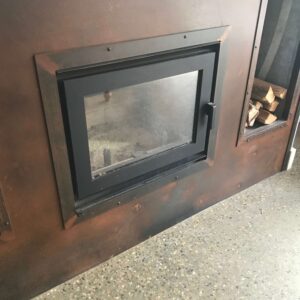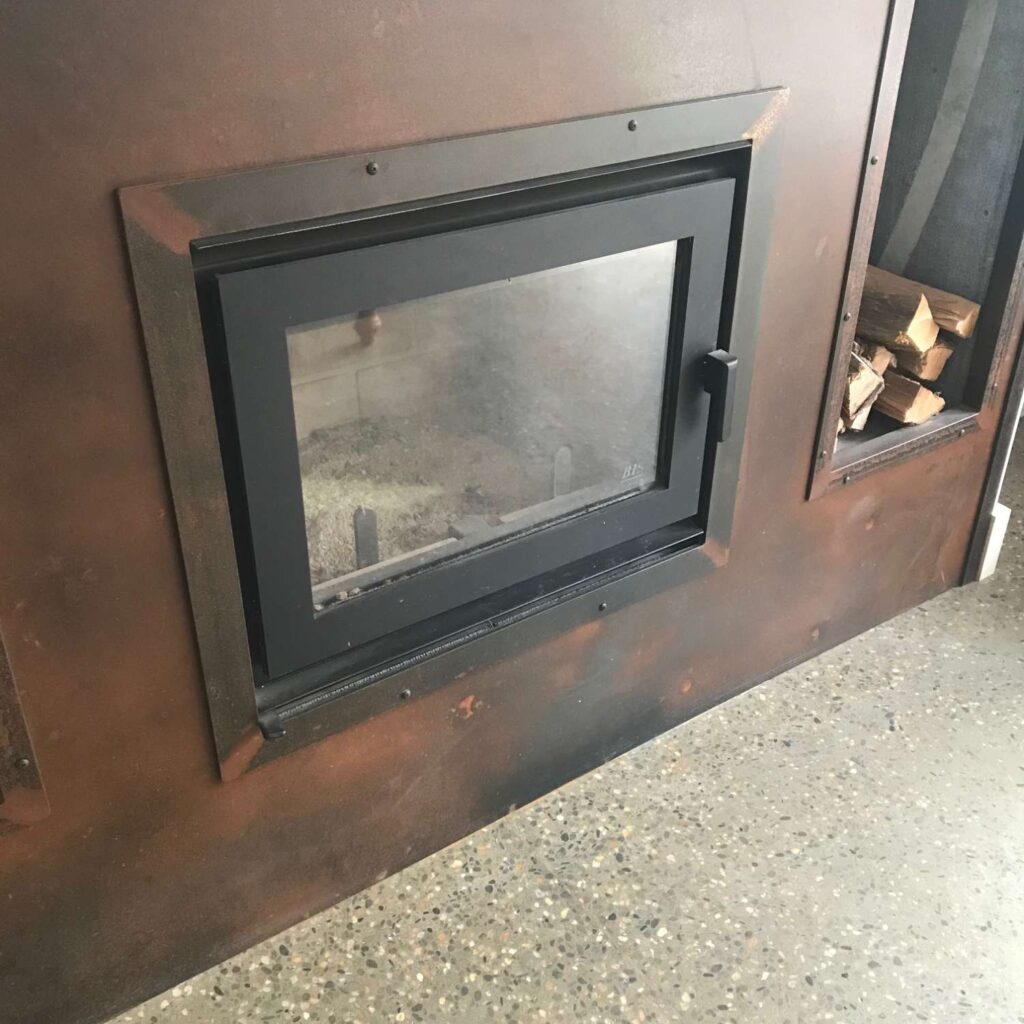In our office, we’ve nicknamed February “fireplace month” because it’s the time of year when the phone starts ringing off the hook with people whose fireplaces aren’t working right in their new home. It’s terrible for everyone when that happens, so in this blog I’ll try to help you avoid being in that situation.
Basically, there are only two fireplace options that I recommend. If you want a gas fireplace, get a direct vent gas fireplace. If you want a wood burning fireplace, get a wood stove or wood stove insert with an outside air intake that connects directly into the firebox and a tightly latching door mechanism. The photo below shows my personal fireplace: a wood-stove insert with a tightly latching door.

Everything else is varying levels of sub-optimal. I do recognize that people have aesthetic reasons for making decisions. But I can also tell you that homeowners expect them to work. And I’ve just been on copied on too many late-night emails in all caps with people demanding that builders “FIX THIS RIGHT NOW” and me somehow getting involved and getting texts at all hours. My stance on fireplaces is that if you choose to do something else and it doesn’t work, I’m not getting involved. Period. Once I take something on I don’t give up on it, and I don’t have a good fix.
A configuration that can work OK (no guarantees) is a regular wood burning fireplace with glass doors, outside air into the firebox and no gas starter. You might have to open a window to get it to draft, but you can close the doors when it’s dying down and your living room probably won’t be *completely* filled with smoke. If you add a gas starter, you may need to block the flue partially open, which will create a cold draft and will make your airtighness test worse. If there’s only one of these in the house, I can probably still get the home’s blower door test to pass Energy Star, but it depends how well the rest of the house scores. No up front promises from me. This option is most likely to work for you if your house is in a location where it’s fairly protected from wind. If you’re on the side of a mountain and get strong winds, the pressures in your house are likely to fluctuate enough to make these fireplaces misbehave.
I don’t recommend putting gas logs in a fireplace that’s designed to burn wood. I’ve had clients get $30,000 worth of smoke damage when that went wrong. It’s a new house – get a fireplace that’s designed for the fuel you want rather than adapting something. Theoretically you can turn this into a power vented option by getting a large flue fan to suck the gasses up the chimney, just don’t call me if it doesn’t work.
I don’t recommend ventless gas fireplaces, and most of the certifications we do won’t allow them. In addition to the fact that these put by-products of combustion, which have well-documented health effects, into the home, they can generate a serious amount of moisture. I’m concerned that they can create indoor relative humidity levels that are really not a good idea in this climate.
In terms of Energy Star’s rules:
“Direct vent” units (basically my 2 recommended options) – are allowed with no additional hoops to jump through.
Vented, but not direct vent units (the wood fireplace without doors or gas logs in the wood-burning fireplace) require the house to pass a backdraft potential test. You will need kitchen makeup air, and not the cheap makeup air that everyone uses to pass code, because those don’t work. You’ll probably need to spend about $2000 to get a kitchen makeup air system that actually works. I also like to be clear with my clients, that although kitchen makeup air is what’s required by Energy Star to pass these fireplaces, it’s often not a sufficient condition to make the fireplace actually draw well.
Ventless are actually allowed by Energy Star, but we have to measure CO levels for 30 minutes and you fail if the levels are too high. In reality, I think you need to ask yourself whether you really want to install something that might have to get torn out if it doesn’t pass. It’s a new house – it’s a lot simpler just to vent it.
A last piece of advice: don’t do a see-through fireplace in an exterior wall (so you can see from inside to outside. In addition to being incredibly gimmicky, they’re impossible to air seal around and I worry about condensation. Technically they’re allowed, but again the house has to be able to eat the loss in airtightness, and it’s not something I can accurately predict for you. If you want indoor and outdoor fireplaces, just do back to back fireplaces with an insulated wall between them.
So you’ve read this, and you still want to do something that I don’t recommend doing? That’s OK. I’ll certify it if I can make that work. Just don’t call me, email me, or text me when it doesn’t work. If someone else told you that it would, definitely make sure to call them. And as with any home – it’s always worth involving a professional to work specifically with your project to get the best possible outcome.
Copyright 2020 Amy Musser.


